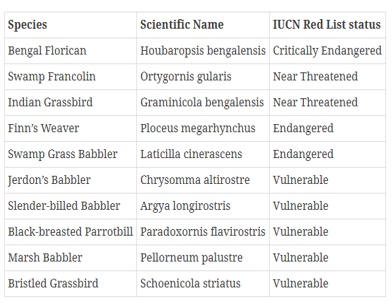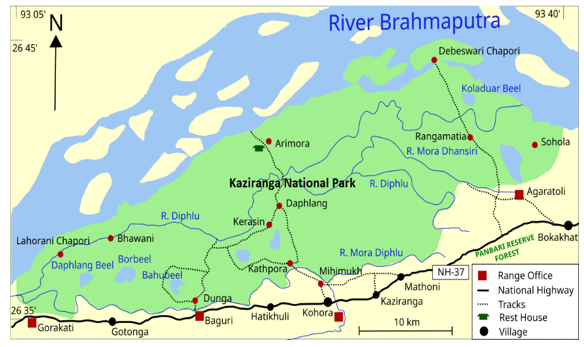Udham Singh Martyrdom Day
Context:
Prime Minister Narendra Modi paid homage to freedom fighter Udham Singh on his 86th martyrdom day, observed on July 31.
About Udham Singh

- Udham Singh was born as Sher Singh on December 26, 1899, in the Sunam city of Sangrur district in Punjab.
- He and his older brother were raised in a Central Khalsa orphanage in Amritsar.
- He joined the Ghadar movement in the early 1920s.
- Singh rose to prominence as a Ghadar activist in the US, establishing the Azad Party and broadening his network abroad.
- Udham Singh was a survivor of the Jallianwala Bagh massacre.
- He planned revenge against former Punjab lieutenant governor O’Dwyer and assassinated him in 1940.
- In 1974, his remains were sent back to India and he was cremated in his village in Sunam.
Jallianwala Bagh Massacre
- This incident happened on April 13, 1919, under O’Dwyer’s regime, British Brigadier Reginald Dyer fired at a crowd of Indians in an open space known as the Jallianwala Bagh in Amritsar, killing several hundred people and wounding many hundreds more.
Tale of Revenge
- On March 13, 1940, as Michael O’Dwyer (then Lt. Governor of Punjab) was giving a speech at Caxton Hall, Udham Singh shot him 5 times at point-blank range with a handgun hidden in the book.
- The massacre’s mastermind, Reginald Dyer, had passed away in 1927.
- He was sentenced to death in the Central Criminal Court. He also went on a hunger strike while in jail. He hanged himself on July 31, 1940 at Pentonville Prison in London.
- In his statements to the police and in court, he called himself “ Mohamed Singh Azad” to show unity between Hindus, Sikhs and Muslims in the struggle for India’s freedom.
First Grassland Bird Survey in Kaziranga
Context:
Recently, the Prime Minister of India highlighted the first-ever Grassland Bird Census in his Mann ki Baat programme, praising its innovative use of artificial intelligence (AI) and acoustic technology.
More on News

- Forest officials, scientists, and conservationists surveyed Kaziranga National Park, between March 18 and May 25 to document the grassland bird population.
- The survey prioritised 10 species that are either globally threatened or endemic to the Brahmaputra floodplains.
- For the survey, they use a combination of point count surveys and passive acoustic monitoring.
- The survey covered the Eastern Assam, Biswanath and Nagaon wildlife divisions.
Key Findings of the Survey
Kaziranga National Park and Tiger Reserve (KNPTR) in Assam recorded 43 grassland bird species.
Findings represented a rare ‘master nest-builder’ Finn’s Weaver colony.
- Finn’s Weaver bird is listed as Near Threatened by IUCN and serves as an indicator species, signifying healthy and functioning grassland ecosystems.
- Grassland birds contribute to ecosystem balance through insect control, seed dispersal and vegetation regulation.

Found the breeding colony of Finn’s Weaver (Ploceus megarhynchus), which is a vital indicator of grassland health.
Among them, 1 is critically endangered, 2 are endangered, 6 are vulnerable and some are only found in the Brahmaputra floodplains.
Kaziranga National Park and Tiger Reserve (KNPTR)
- Kaziranga was officially established as a national park on February 11, 1974, and was designated a UNESCO World Heritage Site in 1985.
- It is renowned for its diverse wildlife, particularly the world’s largest population of Indian one-horned rhinoceroses.
- Spanning around 1,090 km², it lies across Golaghat, Nagaon, Sonitpur and Biswanath districts.
Himgiri Frigate
Context:
Recently, the Indian Navy received the advanced guided-missile frigate Himgiri, built by Garden Reach Shipbuilders and Engineers (GRSE) in Kolkata.
More on the News
- Himgiri (Yard 3022) is the third ship of the Nilgiri Class (Project 17A) and the first of its class built at GRSE.
- It is a reincarnation of the decommissioned INS Himgiri, a Leander-class frigate retired on May 6, 2025, after 30 years of service.
- Designed by the Warship Design Bureau (WDB) and overseen by the Warship Overseeing Team (Kolkata).
- Yard 12652 (Udaygiri), the second ship of Project 17A stealth frigate, being built at Mazagon Dock Shipbuilders Limited (MDSL), was delivered to the Indian Navy on 01 July 2025.
Features and Capabilities
Equipped with:
- BrahMos cruise missiles (anti-ship and land attack)
- Barak 8 missiles (anti-aircraft)
- Advanced AESA radar
Capable of multi-domain warfare: anti-air, anti-surface and anti-submarine operations.
It is powered by a combined diesel and gas turbine system.
Provides aviation facilities for helicopter operations.
Project 17A (Alpha)
- Project 17A Frigates are the follow-on class of the Project 17 (Shivalik Class) Frigates.
- A total of 7 frigates under Project 17A are under various stages of construction at Mazagon Dockyards Limited (MDL) and Garden Reach Shipbuilders & Engineers (GRSE).
- 7 Frigates of Project 17A: Nilgiri, Himgiri, Taragiri, Udaygiri, Dunagiri, Mahendragiri and Vindhyagiri.
- These frigates are stealth-guided missile frigates built for the Indian Navy.
Human Outer Planetary Exploration (HOPE)
Context:
Recently, Bengaluru-based space company Protoplanet launched the Human Outer Planetary Exploration (HOPE) station in Ladakh to simulate lunar and Martian conditions.
More on the News
- HOPE (Human Outer Planet Exploration) is India’s first analog space mission designed to simulate extra-terrestrial conditions on the Moon and Mars.
- The research station is set up at Tso Kar in Ladakh, chosen for its high-altitude, cold desert environment that mimics lunar and Martian conditions.
- The mission starts on August 1, 2025, with crew members participating in a 10-day isolation experiment.
- Participants will undergo psychological, physiological and epigenetic studies to assess adaptability and resilience in deep space conditions.
- The first two crew members are Rahul Mogalapalli and Yaman Akot, both scientists in aerospace engineering and planetary science.
- HOPE is inspired by international analog research stations like the Mars Desert Station (USA), Flashline Mars Arctic Research Station (Canada) and BIOS-3 (Russia), which simulate conditions for future space exploration.
- NASA aims to send a manned mission to Mars in the 2030s.
About Analog Missions
- Analog missions take place in locations that have natural or engineered physical similarities to extreme space environments.
- Analog habitat is a space adapted or designed to support analog missions and add more simulation and testing capabilities.
- Analog astronaut is an individual that decided to play the role of astronaut during a simulated crewed mission.

